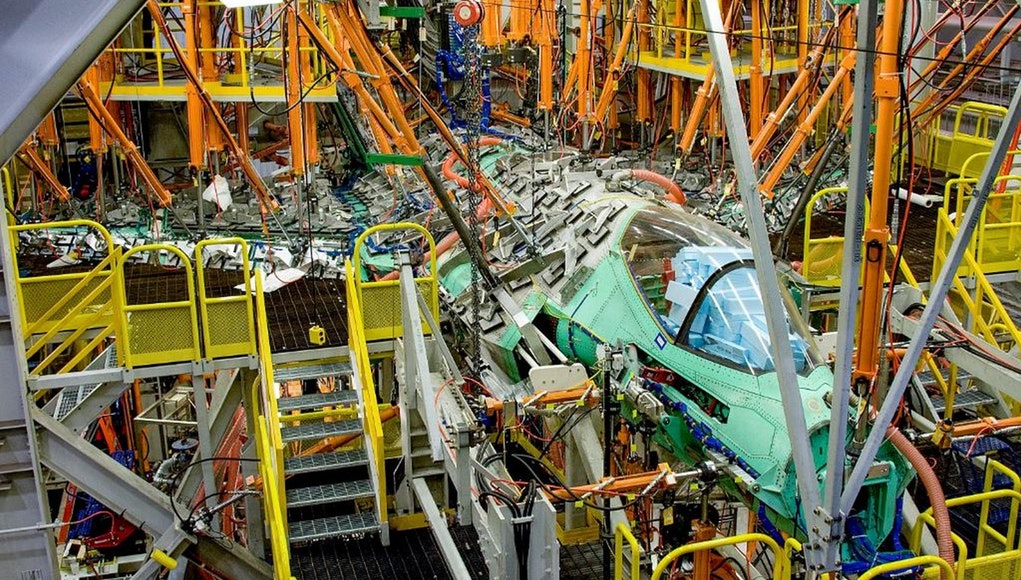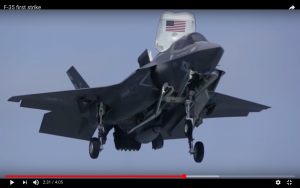F-35 Testing May Slow Two Months Due To Fuel Tube Crash
Posted on

In mid-September the F-35 completed airframe testing
WASHINGTON: Although more than 80 percent of the F-35 fleet is back in the air after the program’s first crash, I understand from a source intimately familiar with the testing regime that initial operational testing (IOTE) is likely to be delayed up to two months by the fuel tube problem afflicting the fleet.
I contacted the Joint Program Office and spokesman Joe DellaVedova said today:
“November 2018 is still the target start date for formal operational testing, pending completion of the remaining readiness actions. Impacts from a mandatory fuel system inspection are being assessed.” (Emphasis added)

Underside of the F-35B as it does a vertical landing back on the USS Essex after the F-35’s first-ever combat strike .
Now, two months (or less) is not a huge amount of time, but it comes on top of years of delays to the program. By the way, this would be the second two-month delay to IOTE in 2018, so that would be four months in one year, which isn’t insignificant. (We wouldn’t be surprised if POGO comments on this as proof of more “problems” with the F-35).
Here’s what the F-35 program said in its official statement Monday — after I inquired:
“After completing inspections, more than 80 percent of operational F-35s have been cleared and returned to flight operations. All U.S. services and international partners have resumed flying with their cleared aircraft.”
The rest of the JPO statement, however, indicates that the other 20 percent of the fleet may not get into the air for an unspecified period:
“The F-35 Joint Program Office continues to work closely with the military services to prioritize fuel tube replacements using the current spares inventory. Pratt & Whitney is rapidly procuring more parts to minimize the overall repair timeline for the remaining jets. Current inventory will restore about half of the impacted jets to flight operations, and the remaining aircraft are expected to be cleared for flight over the coming weeks. The issue is not expected to impact F-35 deliveries and the program remains on track to meet its target of 91 aircraft for the year.” (Again, emphasis ours).
Not no mention of IOTE. Now, DellaVedova’s statement today says the target remains next month, but it also admits the effects of the discovery of the faulty fuel tube aboard the F-35B that crashed Sept. 28 near Beaufort, S.C. are still “being assessed.” So, we’ll see.
Chip Slip
In other news, the current testing plan will test the existing processor, made by Lockheed Martin, instead of the much more powerful chip Harris Corp. will supply starting in LRIP 15. Granted, those are not due to come off the assembly line til 2023.
But look at how they will change the program, according to a Sept. 27 statement by Harris:
- “25 times increase in computing power to support planned capability enhancements
- “Greater software stability, higher reliability, and increased diagnostics resulting in lower sustainment costs
- “An Open System Architecture to enable the flexibility to add, upgrade and update future capabilities.”
Also, this chip will be central to the plane’s performance because it will process data from the cockpit and helmet displays, electronic warfare system, sensors, communications gear and the plane’s guidance system.
One source compared this to introducing a 1 gigabyte processor to a personal computer with a 64 kilobyte core processor. So we’ll be testing the (relatively) slow and wimpy processor during IOTE instead of the purring Jaguar. But, to paraphrase Rumsfeld, you go to testing with the tech you’ve got, not with the tech you’d like to have.
Subscribe to our newsletter
Promotions, new products and sales. Directly to your inbox.

